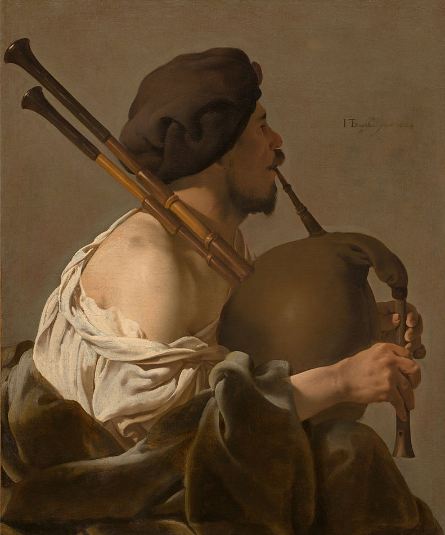The bagpipe is a woodwind instrument whose origin can be traced back to ancient times. The name bagpipe has been synonymous with the Great Highland Bagpipe, overshadowing the variety of traditional forms of bagpipes. Bagpipes or bagpipe are terms that are considered correct, although pipers usually call the instrument ‘the pipes, or set of pipes.’
Historians believed that the bagpipe started as a rustic instrument in Samaria. As a rustic instrument, the bagpipe has been immortalized in Pieter Breughel’s paintings. Subsequently, through Celtic migration, the instrument was then introduced in India, Persia, Greece, and Rome. In fact, during the first century, a Roman historian stated that Emperor Nero used the bagpipe instrument. According to the writings, Emperor Nero knew how to play the pipe with his mouth while the bag was thrust under his arm. However, during the middle ages, the bagpipe became widely known and was appreciated within society.
Moreover, the popularity of the bagpipe instrument has been notable and was played throughout Europe even from before the Norman Conquest up until this day. Bagpipes have several sizes and shapes. Back then, medieval pipes usually had a single drone, while in the 1440s, most of the shepherd-style pipes have a second drone. By the year 1550, a third drone was added to the pipes.
The construction of the bagpipe allows this instrument a continuous supply of air to be maintained. In the year the 1960s, bagpipes have appeared in several other genres such as rock, jazz, metal, punk, hip-hop, and classical music. Some performances where bagpipes can be seen were in Mull of Kintyre written by Paul McCartney, AC/DC’s It’s A Long Way to the Top (If You Wanna Rock ‘n; Roll), and Peter Maxwell Davie’s orchestral composition, An Orkney Wedding, with Sunrise.
Traditionally, the purpose of this instrument is to provide music for dancing and singing. However, with the emergence of dance bands, traditional dance, and recording, bagpipes popularity has declined. Modern music based on dance music traditions that are played on bagpipes is no longer suitable for this genre. Despite the decline of the bagpipe over the last few centuries, many of these pipes were revived by several musicians and performers, including Alasdir Gillies, Jamie Holton, Piper Major Donald MacLeod, Fred Morrison, Brighde Chaimbeul, Anxo Lorenzo, Anders Norudde, Per Gudmundson, and Piper Major William Lawrie among others.
Through the act of squeezing the bag using the left hand while a breath is taken, the airflow can be kept in both the instrument’s chanter anddrone. Additionally, its mouthpiece contains a piece of leather attached to the bag’s end and acts as a one-way valve. When the performer blows the air in, the flap attached to the bagpipe opens, but when he stops blowing air within the bag, the flaps shut. In addition to that, the bagpipe’s chanter has seven finger holes that usually has a range of an octave and one-note.
Ideally, the bagpipe is for monophonic music and solo dances. It has also been mentioned for use in polyphony, but if so, a problem would arise. The instrument’s drone would preclude the possibility of the changes in the model. Also, the continuous sound would prohibit the observance of the rest. Subsequently, during the Renaissance era, the bagpipe then moved from country to court. In fact, Edward II and Edward III had pipers in their court. Meanwhile, King Henry VIII also had a collection of instruments that include pipes.
As well as that, the collection of the Musica Antiqua has a replica with two drones patterned on Pieter Bruegel’s painting, The Peasant Wedding. The Musica Antiqua also has a replica that resembles the Hummelchen bagpipe in Michael Praetorius’s book, the Syntagma Musicum in 1619.Bruegel’s bagpipe model in his painting is smaller than today’s highland bagpipes, while Praetorius’s model features a tiny pipe that has a sweet and delicate tone. Praetorius’s model is useful both with the Renaissance instruments and as a solo instrument. This instrument, made by Wolfgang Lentelme, has two drones that are tunable to f, c, g, and d. It also features two chanters with a range of c1 to d2.

